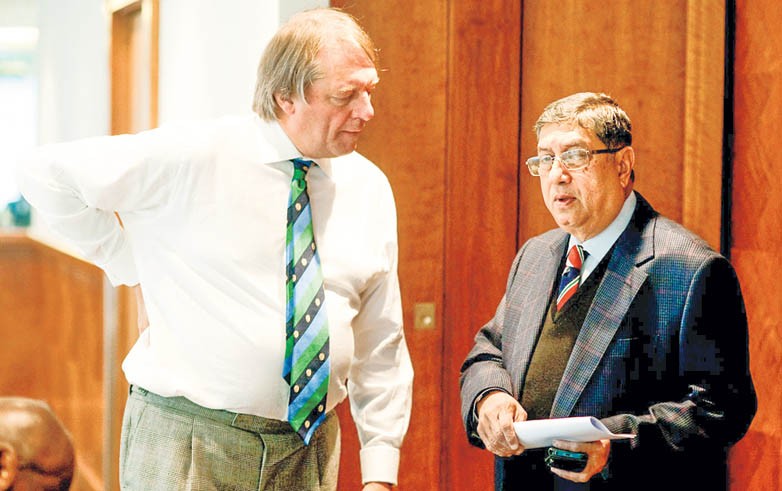
Money makes the sports world go round but maybe it’s time to think about the consequences

So the ‘Big-Three’ oligarchy that hijacked international cricket back in 2014 with a constitutional coup has been dismantled. The rest of the cricket world, it appears, rose up against the ruling elite lead by India and voted overwhelmingly in favour of what they believe is a more unjust and equitable system of power and revenue-sharing. The outcome of the International Cricket Council (ICC) moot in Dubai last week has been hailed as a victory for a sport that has seen a lot of turmoil in recent times. It certainly is a big development considering that international cricket was faced with a bleak future in a set-up where the Indians, aided and abetted by England and Australia, had the license to run roughshod over the other cricket-playing nations of the world.
But the bad news is that the issue is far from over. The Indians still have the financial muscle to upset the international cricket applecart and are currently threatening to use all their bargaining chips in a bid to continue enjoying the lion’s share from the huge piles of cash in the ICC coffers. The Big-Three take-over of the ICC three years ago was fuelled by greed for both power and money. That greed is still there. Whether the cricket world can stay united and continue fighting it, remains to be seen.
The problem with professional sports, including cricket, is that they attract too much money these days.
For people at the helm of sports like football, golf, tennis, baseball, basketball, boxing and cricket, the bottom line is not whether they are taking their respective games forward but whether they are making maximum possible profits from them. The star athletes aren’t much different. Maybe at some point in time, they played for pride and were driven by more noble emotions like patriotism. But that must have been before the era of big money began. Today, if you don’t make hundreds of millions of dollars annually then you are not a true global star.
Last year, Forbes published the list of highest-earners in the world of sports. It once again underlined the fact that today’s star athletes make truckloads of money every year. Take a look at Cristiano Ronaldo’s fat paycheck. The Portuguese football star was the world’s highest-paid athlete in 2016 with total earnings of US$88 million from salary, bonuses and endorsements. In the past, the top-earners used to be athletes from individual sports like golf (Tiger Woods claimed the title more than anybody else). But TV money has fuelled massive increases in player earning across team sports like football, baseball, basketball and even cricket. Ronaldo’s biggest rival Lionel Messi was ranked No. 2 in the list with earnings of $81.4 million. The elite list of 100 top-earning athletes featured stars from 23 countries in 10 sports. During a 12-month period they earned a cumulative $3.15 billion. That’s big money. And you know how big money works.
Unlike football and baseball, cricket is a latecomer to the party. In many ways, it was better off without all the professional Twenty20 leagues and the big paychecks that they offer. But it was unavoidable in the aftermath of cricket’s transformation from a colonial sport that was ridiculed by the best part of the world (read America, China and Europe) into a vastly popular team game that could even compete with football. Cricket-mad nations like India, Pakistan and Bangladesh have fuelled cricket’s rise in recent decades. South Asia has become the heartland of world cricket and everybody knows who the economic superpower in this part of the world is, don’t we? That’s why what happened in Dubai last week might just end up as a momentary relief for the rest of the cricket world. Unless concrete measures are put in place, India will strike back because that’s the way the game is played in professional sport these days. If you have enough influence, then you are going to use it.
The Indians have that influence. They know that major cricket events like the ICC World Cup, the World Twenty20 championships and the Champions Trophy depend heavily on Indian businesses when it comes to generating revenues. You take India out of any such tournament will mean that you will take out a huge slice from the projected incomes. That’s precisely the reason why the Indian cricket board (BCCI) is threatening to boycott the ICC Champions Trophy to be hosted by England in June. The Indians have been let down by the English and are now ready to punish the ECB for it. All of India’s matches at the Champions Trophy have been sold out. The India-Pakistan game on June 4 in Birmingham is seen as the biggest attraction of the Champions Trophy. It would be an understatement to say that India’s pull-out will take the sheen off the elite eight-nation contest. That said, the ECB and other cricket boards shouldn’t allow themselves to be cowed by BCCI. If the Champions Trophy has to be played without India then so be it. World Cup 2019, also to be held in England, can also take place sans India. It will not make huge profits but that’s the price world cricket should be willing to pay. I’m sure things will not come down to that. Men at the helm of BCCI are shrewd businessmen. They should know that the cricket world can and will survive without India’s cash. But can Indian cricket survive on its own? Maybe after deserting the rest of the cricket world, BCCI will be able to set up its own cricket circuit funded by the billions of rupees that the sport attracts in the country. They can even have an (Indian) World Cup final featuring Mumbai and Delhi. That could be fun for hundreds of millions of die-hard Indian cricket fans but for how long?